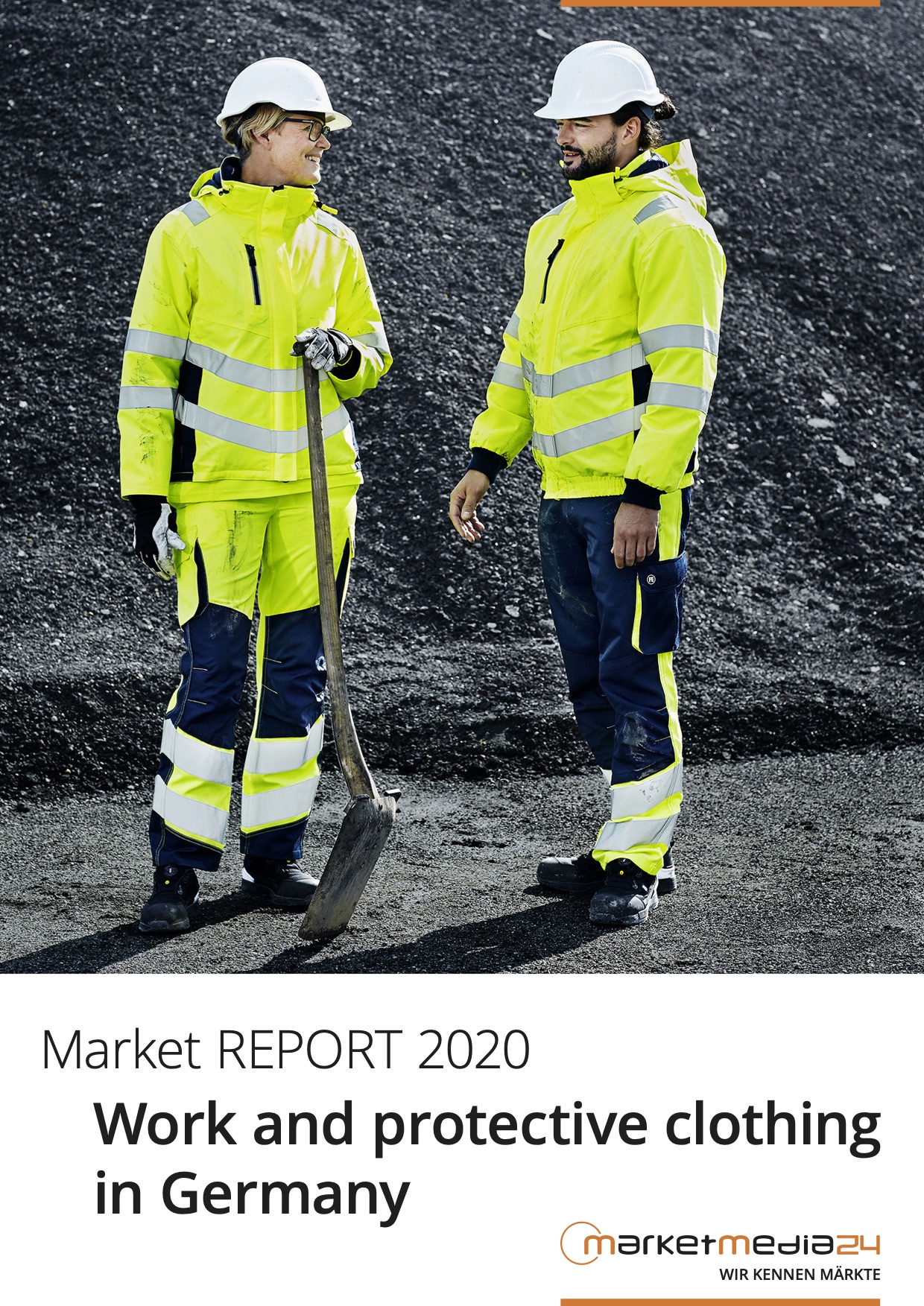
Global cooling fabrics market to reach USD 2.6 billion by 2025
A weakening industrial economy, trade conflicts, Brexit and now the corona pandemic result in an uncertain future. Though, how will workwear and PPE be affected by these parameters?

8th December 2020
Innovation in Textiles
|
Cologne & Hamburg, Germany
Report summary
The economic crisis of a decade ago hit the industry for workwear and personal protective equipment (PPE) hard with a market slump of 10%. However, the low point did not last long. Sales in Germany recovered and are currently 20% (workwear) and a good 5% (PPE) higher than in 2010. However, the conditions for the industry are becoming more difficult.
A weakening industrial economy, trade conflicts, Brexit and now the corona pandemic result in an uncertain future. Though, how will workwear and PPE be affected by these parameters? In three scenarios the industry insiders of Marketmedia24, Cologne, assessed the development of the next decade and see light at the end of the tunnel.
The low point could be overcome as early as 2022. There are good reasons for the positive outlook: More than half of the industry's sales are generated in the sectors of healthcare, trade and services, among others, which have been little affected by the Corona crisis. Online retailers and the textile rental service will be the main beneficiaries of future expectations: Their market shares are expected to increase to 13.3 and 35.8 % respectively by 2028, as the recently published study Market REPORT Work and protective clothing 2020 in Germany shows.

The market for workwear and PPE has developed positively since the end of the financial crisis, with sales increasing from year to year. "Various factors have contributed to this. In particular, the increasing shortage of skilled workers has led to a greater significance of work- wear and PPE. They are being used more and more consciously as a means of employee retention and for better health protection. An upgrade in design and functionality of workwear and PPE ranges plus an increasing gender-related supply for men and women are backing up this trend. At the same time, the rejuvenation cure of collections resulted in a higher price level, leading to an increasing turnover for the entire branch," says textile engineer and author of the study, Sabine Anton-Katzenbach (Textilberatung Hamburg), summarizing the latest developments.
The data of the market report reveals a particular high demand of workwear and PPE in industrial sectors: Approximately 45% of the expenditures are made in this sector, while 55 % are divided among branches such as health care business, hospitality, hand- icraft and service industry.
A new impetus also comes from a more sustainable approach and more transparency in sup- ply chains being called for by the Federal Ministry for Economic Cooperation and Development (BMZ). To this end, the authority has launched the governmental seal "Green Button" which shall become a preferred criterion for public tenders regarding workwear and protective cloth- ing. "Because sustainability does not come for free and fairly produced textiles and clothing are usually somewhat more expensive, the "Green Button" could also contribute to a steady market growth because of requested quantities in tenders," adds Sabine Anton-Katzenbach.
In view of the corona pandemic, however, predictions about the markets future development of became difficult. Usual prediction models no longer work, planning is done with great caution, because an anticipation of longer-term market developments begins with a look back at the past. Though, does the past still play a role for the future of this industry?
The new Market REPORT Work and protective clothing 2020 in Germany cannot give a clear answer to this question due to the many unknown factors. However, the study provides three viable scenarios based on possible developments in economic growth up to the year 2028. In an optimistic scenario Marketmedia24 market research team expects a rapid recovery: According to the study, sales of workwear and personal protective equipment could already have reached the 2019-level in 2022. However, if the stagnation of the market continues for a longer period of time, a rapid ‘catch-up’ is not to be expected.
The current situation is also affecting distribution channels: in times of social distancing online retailing is booming more than ever before taking customers away from traditional retailers. Even agencies that are specialized in corporate clothing are left behind because of Corona as there are no trade shows, congresses or special event where employees are meant to wear branded clothing. On the other hand, prospects for the textile rental service industry are optimistic due to new-comers in the business of textile sharing providing the industry with further growth in the coming decade.
The new edition of the ‘Market REPORT Work and protective clothing 2020 in Germany’ provides reliable facts and figures for all product groups (women's and men's workwear, safety and working shoes, safety helmets, protective gloves), for the economic sectors of industry, retail, crafts, healthcare and care, hospitality, services and others, as well as for all relevant distribution channels. The study provides a well-founded outlook on the development of the industry until 2028 and is therefore an important orientation guide for all market players.
Buy this report
Publisher: Marketmedia24
56 pages, published December 2020
Report price: EUR 1050.00 Euro plus VAT.
Reports are supplied in PDF format only via email and can be purchased by emailing your order to us. Our partner Marketmedia24 will then invoice accordingly and send your report by email upon receipt of payment. To buy this report, please email [email protected] quoting the report title – ‘Market REPORT work and protective clothing 2020 in Germany – A new age has dawned’.

Business intelligence for the fibre, textiles and apparel industries: technologies, innovations, markets, investments, trade policy, sourcing, strategy...
Find out more